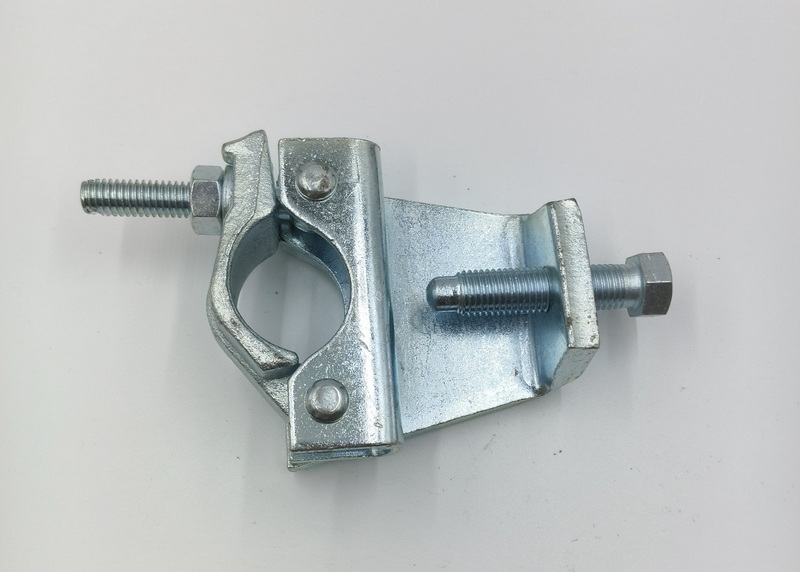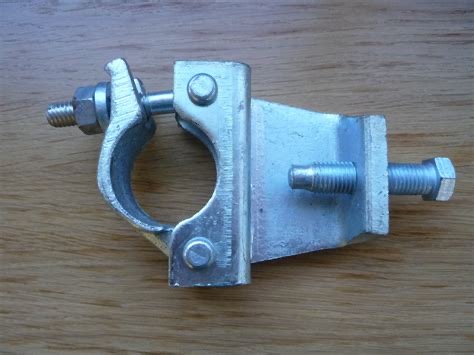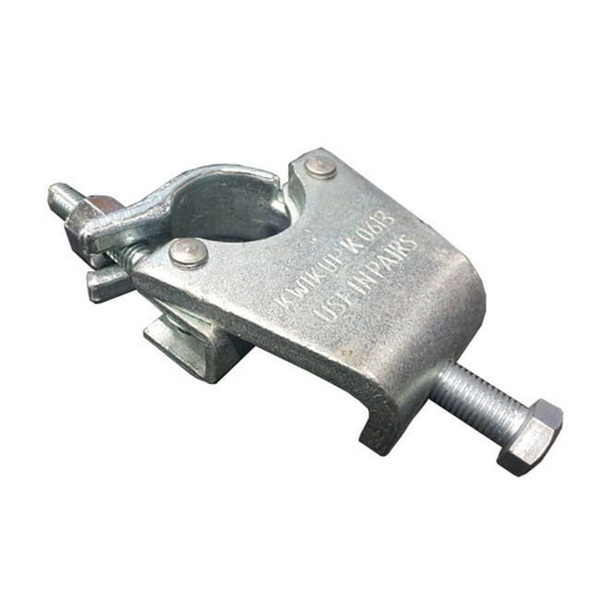Content Menu
● Introduction to Beam Coupler Scaffolding
● Key Components
● Safety Standards and Regulations
>> OSHA Standards
>> European Standards
● Types of Beam Couplers
● Safety Considerations
>> Proper Installation
>> Load Capacity
>> Regular Inspections
● Best Practices for Beam Coupler Scaffolding
● Conclusion
● FAQ
>> 1. What are the primary safety standards for beam coupler scaffolding?
>> 2. How often should beam couplers be inspected?
>> 3. What is the load capacity of girder couplers?
>> 4. Why are beam couplers used in pairs?
>> 5. What training is required for workers using beam coupler scaffolding?
● Citations:
Scaffolding is a crucial component in construction projects, providing workers with a safe and stable platform to perform tasks at heights. Among the various types of scaffolding systems, beam coupler scaffolding stands out for its versatility and strength. This type of scaffolding relies heavily on beam couplers, which are specialized fittings used to connect scaffold tubes to structural sections like beams and columns. Ensuring the safety of beam coupler scaffolding involves adherence to specific standards and regulations, which are discussed in detail below.

Introduction to Beam Coupler Scaffolding
Beam coupler scaffolding is a form of tube and coupler scaffolding that utilizes beam couplers to secure the scaffold structure to existing beams or columns. This setup is particularly useful in environments where traditional scaffolding might not be feasible due to space constraints or the need for additional support.
Key Components
1. Beam Couplers: These are essential fittings that connect scaffold tubes to beams. They come in different types, such as girder couplers and gravlock couplers, which are designed to handle various structural sections up to a certain thickness.
2. Scaffold Tubes: These are the primary structural elements of the scaffolding system, made from steel for strength and durability.
3. Couplers: Besides beam couplers, other types like swivel couplers and sleeve couplers are used for different connections within the scaffold structure.
Safety Standards and Regulations
Safety standards for beam coupler scaffolding are primarily governed by regulatory bodies such as OSHA (Occupational Safety and Health Administration) in the United States and similar organizations in other countries. These standards ensure that scaffolding systems are designed, erected, and used safely to prevent accidents.
OSHA Standards
- OSHA 1910.28: This standard outlines the requirements for scaffolding in construction, including the design, construction, and use of scaffolding systems. It emphasizes the importance of proper installation, inspection, and maintenance of scaffolding components, including beam couplers.
- Load Capacity: Scaffolding must be designed to support at least four times the maximum intended load. This includes the weight of workers, materials, and equipment.
- Fall Protection: OSHA requires fall protection for workers at heights of 10 feet or more, though many sites implement this at 6 feet or higher.
European Standards
In Europe, scaffolding components, including beam couplers, are manufactured to comply with standards like BS1139 (Part 2) and EN74. These standards ensure that scaffolding fittings are durable and safe for use.

Types of Beam Couplers
Beam couplers are available in different types, each designed for specific applications:
1. Girder Couplers: These are used to connect scaffold tubes to structural sections like steel I-beams. They are designed to handle sections up to 45 mm thick and are typically used in pairs for stability.
2. Gravlock Couplers: Similar to girder couplers, these are used for securing scaffolds to beams and are known for their reliability and strength.
3. SK Couplers: Another term for girder couplers, these are used in heavy-duty applications.
Safety Considerations
Proper Installation
Proper installation of beam couplers is critical. They must be securely attached to both the scaffold tube and the structural beam to prevent slipping or failure.
Load Capacity
Understanding the load capacity of beam couplers is essential. Overloading can lead to coupler failure, compromising the entire scaffold structure.
Regular Inspections
Regular inspections are necessary to identify any wear, rust, or damage to beam couplers. Damaged couplers should be replaced immediately to ensure safety.
Best Practices for Beam Coupler Scaffolding
1. Use in Pairs: For added stability, beam couplers should be used in pairs on both sides of the beam.
2. Material Selection: Ensure that all components, including beam couplers, are made from high-quality materials that meet relevant standards.
3. Training: Workers should be trained on the proper use and inspection of beam couplers to ensure safety.
Conclusion
Beam coupler scaffolding is a versatile and reliable system used in construction projects. Ensuring safety involves adherence to strict standards and regulations, proper installation, and regular maintenance of beam couplers. By understanding these safety standards and best practices, construction sites can minimize risks and provide a safe working environment for workers.

FAQ
1. What are the primary safety standards for beam coupler scaffolding?
The primary safety standards for beam coupler scaffolding include OSHA 1910.28 in the U.S. and standards like BS1139 (Part 2) and EN74 in Europe. These standards ensure that scaffolding systems are designed and used safely.
2. How often should beam couplers be inspected?
Beam couplers should be inspected regularly, ideally before each use, to check for signs of wear, rust, or damage. Any damaged couplers should be replaced immediately.
3. What is the load capacity of girder couplers?
The load capacity of girder couplers varies depending on their position and type. Typically, they can handle loads up to 30 kN per pair when uniformly loaded vertically.
4. Why are beam couplers used in pairs?
Beam couplers are used in pairs to provide additional stability and prevent slipping. This ensures that the scaffold structure remains secure and safe for workers.
5. What training is required for workers using beam coupler scaffolding?
Workers should receive training on the proper installation, use, and inspection of beam couplers. This training helps ensure that scaffolding is erected safely and used correctly.
Citations:
[1] https://policies.unc.edu/TDClient/2833/Portal/KB/PrintArticle?ID=132007
[2] https://www.youtube.com/watch?v=offGkz1G64s
[3] https://patents.google.com/patent/EP0351703A2/en
[4] https://dss.net/scaffold-beam-clamp-safety-and-efficiency-in-construction/
[5] https://www.youtube.com/watch?v=a6-6mY8R_f4
[6] https://max.book118.com/html/2017/0425/102172593.shtm
[7] https://scaffoldtype.com/scaffolding-coupler/
[8] https://www.youtube.com/watch?v=ZWbx-Hmejog
[9] https://patents.google.com/patent/CN101053134B/zh
[10] https://grsscaffolding.com/blog/scaffolding-couplers-types/
[11] https://www.istockphoto.com/photos/scaffolding-clamps
[12] https://patents.google.com/patent/WO2003091512A1/zh
[13] https://patents.google.com/patent/CN116498051B/zh






















